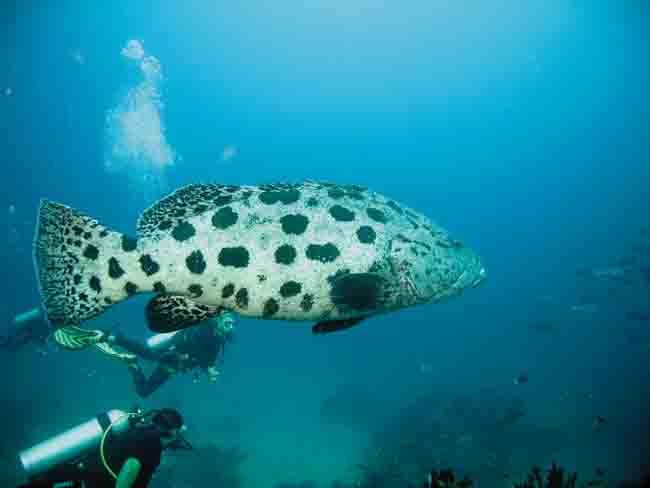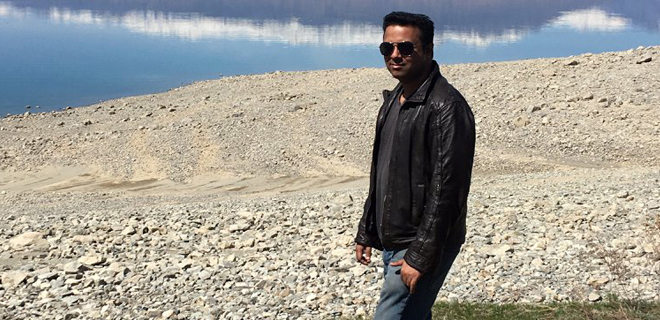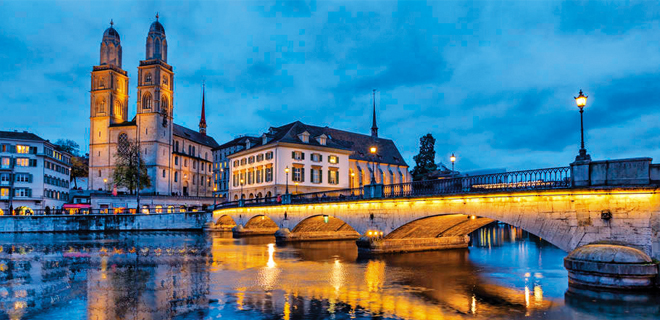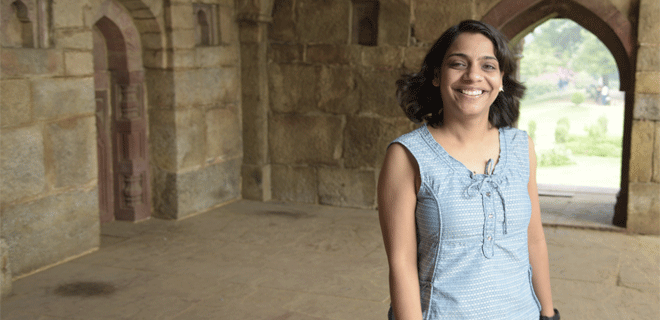Going Down Under
A diver's delight, the unique blend of crystal clear waters, coral reefs and unique sea life offer an experience of a lifetime

I never really planned to dive. I had just snorkelled for the first time in my life a few days ago off Havelock Island’s Elephant Beach and had seen the deep-sea void in the face. It was fascinating, it was also bloody frightening to have the continental shelf drop off below. So I was fairly sated, wandering around South Andamans with my friends, wondering if I should go see the mini coral archipelago of the Mahatma Gandhi Marine National Park.
Going past Wandoor, an hour south of Port Blair, my eyes chanced upon an advertisement of a diving company offering day dives in the area. And suddenly, that was what we wanted to do then. Not see the islands from above, but the sea from below. So we crashed through the thickets as the signs drew us deeper into the forest, until we arrived, panting, in front of a large log cabin. It turned out to be the headquarters of Lacadives, as well as the Andaman and Nicobar island’s Environment Team (ANET).
To cut a long story short, we were going to dive. And we couldn’t have chosen a better set of people to dive with. Lacadives is one of the best diving operations in the country, operating primarily in the Lakshwadeep islands, as well as in the Andamans. Today, while the diving scene has pretty much been monopolised by crews operating out of Havelock Island, the dives off South Andaman’s coast is quite free of boats and divers. Since we were all newbies, we were given a basic course in using the diving gear, especially the vital art of equalising. Basically, the deeper you sink, the more you need to neutralise the increasing water pressure. Since you can’t yawn under water, you instead pinch your nose shut and count up to three, and then blow out immense amount of bubbles. It’s serious business, so we’re drilled in the basics in a swimming pool before being whisked off to sea.
The Andamans is made up of fringing coral islands. This means that they occur close to the shore and radiate outwards into the sea, ending in a perimeter barrier. It’s this kind of reefs that are the best protection for an island against natural disasters. This also makes them relatively easily accessible. We dive fairly close to the Wandoor Beach, not quite out of sight of land, but far enough to feel totally at sea. My dive is to a respectable three metres—nothing earthshattering, just enough for an ‘immersive’ experience. We all dive with an instructor for company and all we had to do was to enjoy the view.
And what a view! The deeper I sank—and it is quite difficult for the human body to sink—the more surreal became the view, a slowmotion water-world made up of the shifting shapes giant towers of coral and schools of darting fish. I’ve never been a swimmer, so it felt quite strange to be gliding through the water without a care in the world. But then, my instructor did tell me that one doesn’t really need to know how to swim to be able to dive. It’s a strange feeling. Under water, water doesn’t move or ripple, and sometimes you get so mesmerised by this floating limbo that it’s only when you breathe out your bubbles that you realise that this strange new element you’re in is not static, that it also moves. The other way to realise this is if you look up from the sea bottom, which I did, and almost panicked.
I was kneeling in the soft sand of the seabed, and the undulating surface with the bright light of day seemed impossibly far away. Surrounded by the mysterious, unyielding aquagreen of the sea, I suddenly felt profoundly claustrophobic. I quickly made the thumbs-up motion, which in diving sign language means “Take me up.” However, my instructor, the very calm Seemant, made the motion for me to calm down and breathe slowly and regularly, until the feeling passed. And it soon did, leaving me feeling quite sheepish. At least, under water with a tube shoved up my mouth, it didn’t show.
One of the most common fish down here is the parrot fish. These are herbivores—though only part time—and they love rooting through the coral for food. This involves them breaking off tiny little bits of the reefs, which immediately disintegrate into fine sand. In fact, the famous white beaches of the islands is much the work of generations of parrot fish, at it for thousands of years. Large schools of some very tiny fish followed me around in the coral canyon for a bit. They hovered right in front of my face, staring at me with countless tiny eyes. Yet every time I made any attempt to touch them, they’d melt away, only to reform in a flash and continue staring at me. It was a bit unnerving.
The star of coral reefs everywhere has to be the clown fish, and I saw a few of them too. Anemone fish— their true name—are so called because they live their lives in a close symbiotic relationship with sea anemones. The latter provide them with shelter and food, but nobody quite knows what role the anemone fish plays in this arrangement.
When I’d dived, the sun had gone behind some storm clouds, but it decided to come out while I was under water. The change was dramatic. Everything that had the vague look of a shadowy sea-monster’s den suddenly was revealed in a riot of colour as the reef and the fish suddenly threw off dazzling steaks of reds and whites and blues of the most amazing range of hues. The sea itself became a vast transparent blue vault, the sand a bright white. All I could do to show my happiness was to turn to Seemant and make that thumbs aloft gesture again. This time I’d gotten my signs mixed up, I was just glad to be here!
INFORMATION
Getting there. You can fly from Delhi to Port Blair on hopping flights via Kolkata and Bangalore. Daily flights from GoAir, Jet Konnect, Spice Jet and Air India charge approximately Rs. 7,500 one-way. If you have time, you could even take the scenic route to Port Blair and sail from either Kolkata, Chennai or Vizag (shipindia.com). It takes between two and three days, but berths go for as cheap as Rs. 1,880
Getting around. It’s quite easy to get around in Port Blair, on board auto rickshaws, local buses, or even bicycles. For a trip to Wandoor, you could hire a cab or take a bus. To get to Havelock, catch the government ferry that leaves from the Phoenix Bay Jetty thrice a day (9:30am, 2pm, 4pm) at Rs. 150 per person
What to see and do. Apart from just lounging in Port Blair, visit the Cellular Jail, take a boat ride to Ross Island to see the ruins of British administrative buildings, the amazing—though leechinfested—jungle of Mt. Harriet National Park, the highest point in Port Blair with some amazing views. At Havelock, you can hook up with various operators and go sailing in glass-bottom boats, visit Radhanagar Beach, go snorkelling and diving off Elephant Beach. The food is great too, mostly Bengali cuisine, and a lot of seafood
Diving operators. I used the services of Lacadives (Rs. 4,500 per person for a day, lacadives.com), the pioneers of diving in the country and one of the best crews to dive with. Other notable diving crews in the Andamans include Barefoot Scuba (diveandaman.com) and Dive India (diveindia.com) in Havelock Island









